The U.S. Census Bureau released estimates showing the nation’s 65-and-older population has grown rapidly since 2010, driven by the aging of Baby Boomers born between 1946 and 1964.
The 65-and-older population grew by over a third (34.2 percent or 13,787,044) during the past decade, and by 3.2 percent (1,688,924) from 2018 to 2019. The growth of this population contributed to an increase in the national median age from 37.2 years in 2010 to 38.4 in 2019, according to the Census Bureau’s 2019 population estimates.
“The first Baby Boomers reached 65 years old in 2011,” said Dr. Luke Rogers, chief of the Census Bureau’s Population Estimates Branch. “Since then, there’s been a rapid increase in the size of the 65-and-older population, which grew by over a third since 2010. No other age group saw such a fast increase. In fact, the under-18 population was smaller in 2019 than it was in 2010, in part due to lower fertility in the United States.”
Showcase Of Homes Event Canceled By Pandemic Concerns; Online Presence Planned
This year’s “live” Showcase of Homes has been canceled by the Saratoga Builders Association due to public health and safety concerns from the COVID-19 pandemic.
The event this fall would have been he 25th for the organization.
This annual community event has contributed over $1.3 million dollars to local charities over the years.
Though the organization has dropped the “live” tour for 2020, officials said there will be special alternative programming this fall in several forms—online, virtual and TV—to celebrate “our builder’s homes and developments, plus provide a way for you to contribute to our two important local charities that normally benefit from ticket sales,” the group said in a statement. “The Showcase Committee is working on the details” and more information will be released in August.
“We are thankful for all the generous support of this annual event over the years and look forward to presenting the 2021 Saratoga Showcase of Homes next year as we celebrate our 25th anniversary,” the group statement said.
Senior Center of Kingsbury And Fort Edward Runs Programs That Improve Quality Of Life
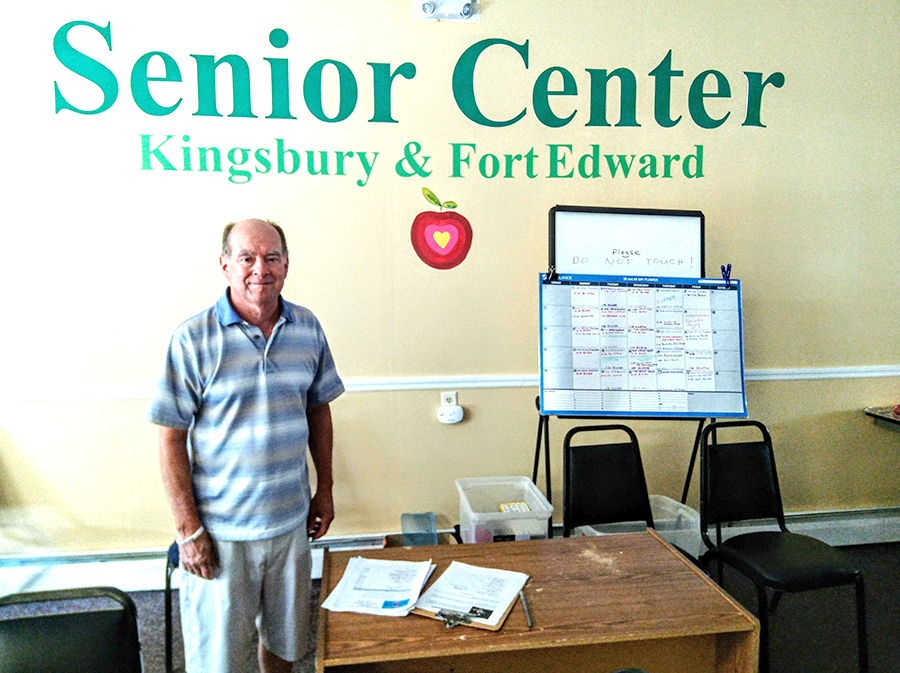
by Andrea Palmer
The Senior Center of Kingsbury and Fort Edward, 78 Oak St., Hudson Falls, has been an area resource for many years.
Max McDonnell, executive director of the center for nine of those years said he is “proud of all the services, programs and activities we have. We work closely with the municipalities of the town of Kingsbury the village of Hudson Falls and the town and village of Fort Edward. We work closely with the Washington County Office for the Aging, and the Tri-County United Way.”
“It’s a rewarding job,” said McDonnell. “What a great opportunity it is to work with seniors, and to be the director of the Senior Center. I enjoy going to work every day.”
He said the center gives the seniors the opportunities they want and need “to live the best lives possible. This includes physical fitness, transportation, cultural enrichment, socialization, nutrition, education and health information, and community interaction.”
People Over 50 Opening A Business Should Be Careful With Investment Funds
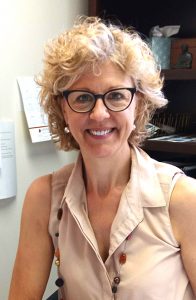
By Christine Graf
An estimated 29 million Americans between the ages of 50 and 70 say they are interested in starting a new business. In recent years, more than a quarter of all new businesses were started by people over the age of 50, analysts say.
Starting a business at any age can be a daunting task, and approximately half of all new small businesses close within five years. It is for that reason that experts warn those in the 50-plus age group to avoid investing their retirement income in new business. If a business fails, there is less time to rebuild these retirement savings.
Lake George human resources consultant Gail Hamel advises new business owners to be prepared to weather financial difficulties.
“They have to make sure they are going to be able to live without making money, and that they have some sort of fallback for a while until money starts coming in. I think that’s the hardest part for a lot of people. It’s not for everybody,” she said.
Hamel started her own business, Hamel Resources, when she was 52. She said it took almost two year before her business began to generate a steady stream of income. Before starting her own company, she worked as a human resources manager for a bank with more than 20,000 employees.
“I went from that steady paycheck getting dumped into my account every two weeks to draining my savings,” she said.
Wesley Community Renovating Apartments; Phased Work Schedule Is Three Years-Plus

©2019 Saratoga Photographer.com
By Jennifer Farnsworth
The Wesley Community in Saratoga is undergoing renovations.
Wesley CEO Brian Nealon said the $20 million project will include apartment renovations, a memory care assisted living facility and a training center.
Nealon said the entire project will take about three and a half years to complete, pending final approval from the city.
Renovations on the 37-acre property have already begun on the Springs building, the oldest part of the property, according to Nealon.
He said the fifth floor of the residential building has been completed and they will continue to work their way down to lower floors, working on about a quarter of the floor at a time.
AOW Associates of Albany is the construction manager.
Organize Senior Moves LLC Helps Older People Settle Into New Home, Surroundings
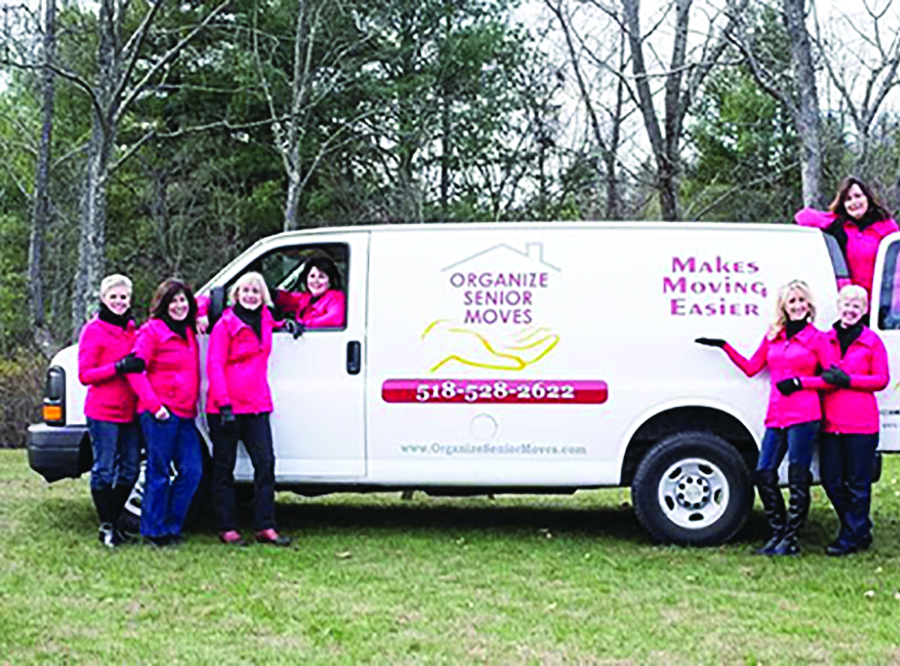
Courtesy Organize Senior Moves LLC
By Susan E. Campbell
Choosing to leave one’s home is one of the last major decisions a senior citizen may make, and one of the most difficult. A local company serving the Capital District and beyond is helping to make not only the decision but also the transition a comfortable, stress-free process.
“We really do make moving easier,” said Michelle Kavanagh, CEO and founder of Organize Senior Moves LLC, a certified woman-owned business.
Kavanaugh’s enterprise was first a companionship service offering such help as food shopping and preparing meals.
Business Report: The Caregiver’s Conundrum
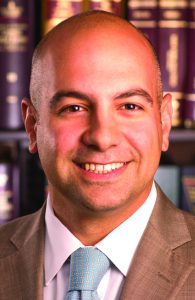
By David Kubikian
When I meet with prospective clients who want to engage in estate or elder law planning, it is not uncommon to hear them forcefully tell me something along the lines of, “I will never go to a nursing home” and/or hear them allude to preferring to take walk in the woods and “take matters into their own hands”
I understand what they are saying. It should be nobody’s life goal to ever call a skilled nursing facility their home. Nonetheless, we don’t always have a choice in life and the truth is that with caring and compassionate skilled care, the quality of our life can greatly be enhanced, even in a nursing home. There is however, an alternative called “aging in place”.
Business Report: Planning For Peace Of Mind

By Brian M. Johnson, MBA, CLTC
If you’re approaching age 50 or thinking of retirement, keep this acronym in mind “SWAN.”
Surveys from folks in this retirement planning age group are interesting because these concerns are almost always in their answers to questions such as: What do you worry about after your working years are over?
Here are some top concerns:
• Outliving my money.
• Keeping my nest-egg secure (no or little risk of principal).
• Dying too soon.
• Becoming sick or disabled which in turn could eat up my retirement nest-egg.
• Becoming dependent on my children.
• Leaving a meaningful and significant legacy to my children/grand-children/charity.
These concerns are real-life and can happen to any of us without proper planning
This is where my “SWAN” comes in. It stands for Sleep Well at Night.
If you have this SWAN wish for yourself or a parent/family member, then you need to speak with a competent financial/insurance advisor that knows about a fairly new financial-insurance product that is extremely popular to folks approaching age 50 and above.
It combines long term care, critical illness and life insurance along with tax advantaged cash value build up that can be used as an annuity income stream for retirement.
People Getting Older, Wanting To Downsize, Have Options Available In The Region
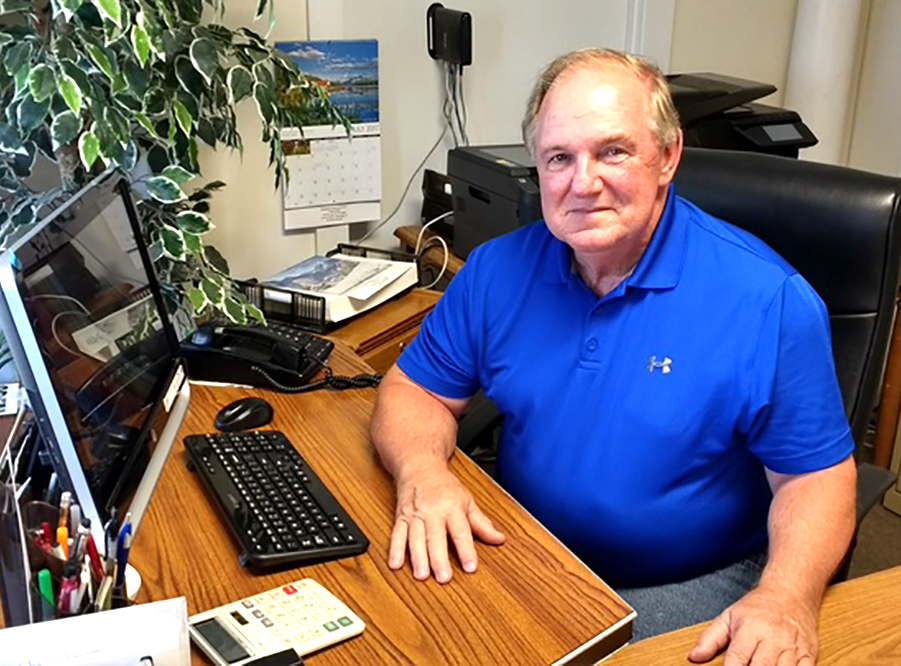
By Liz Witbeck
One trend in the real estate field in recent years is that people want less space as they get older. People are looking for something smaller and more affordable. This is especially common with folks who have retired.
“Ninety percent of people who walk through our doors are looking to downsize,” said Vickie Rehberg a real estate salesperson for Better Way Realty in Fort Edward.
Rehberg moved to New York four years ago from Florida, where she was a licensed Realtor. She has extensive experience working with buyers looking to downsize.
Rehberg herself knows how it feels to downsize a home, because she did it herself. When living in Florida, she lived in a home that was more than 3,000 square feet. When she decided to move to New York to be closer to her son, she purchased a home that was less than 1,000 square feet.
“It’s a big relief” said Rehberg. “You think, ‘Why didn’t I do this sooner?’”
For people looking to retire, Glens Falls, Queensbury and the surrounding region offer many options.
Business Report: Mid-Year Economic Outlook

Courtesy Sterling Manor Financial LLC
By Stephen Kyne
We’re halfway through 2017, so it’s time to take a look at how the year is progressing, and where we see the remainder of the year going, in terms of risks and opportunities in the economy.
The economy has grown at a faster-than-expected pace so far this year. First quarter GDP has been revised up, twice, and well exceeds expectations. Almost all of the S&P has reported earning for its first fiscal quarter of the year, and are trending toward a year-over-year growth of upwards of 20 percent (12 percent, not including the energy sector). These are largely due to top line revenue increases, meaning that increased profits are largely due to business growth, rather than cost cutting. We expect this trend to continue throughout the year.
Inflation is holding steady, in line with 2016 figures, at roughly 2 percent. Some inflation, perhaps counter-intuitively, is fundamentally good for the economy. When we expect goods and services to be more expensive tomorrow than they are today, we make purchases today, which means inventories need to be replenished, which puts people to work and gives them money to spend on the things they want and need. Without some inflation, the economy stagnates.
Another driver of spending this year may be interest rates. The Fed increased rates another .25 percent in June, as was expected. With the Fed finally making good on promises to increase the rates they charge banks, we’ll see that increase reflected in higher mortgage rates. The expectation of higher future rates pushes fence-sitting potential buyers into the housing market. As a result we’ve seen, and will likely continue to see, increased sales of new and previously owned homes. The same will likely be true of any purchases which are typically made on credit, including automobiles and business capital items.
An asset class that may be hurt by rising interest rates, however, would be bonds – specifically many bond funds. As newly issued bonds carry higher interest rates, the value of previously issued bonds, with relatively lower interest rates, should decrease. These changes should be reflected in the overall value of the funds that hold them.
